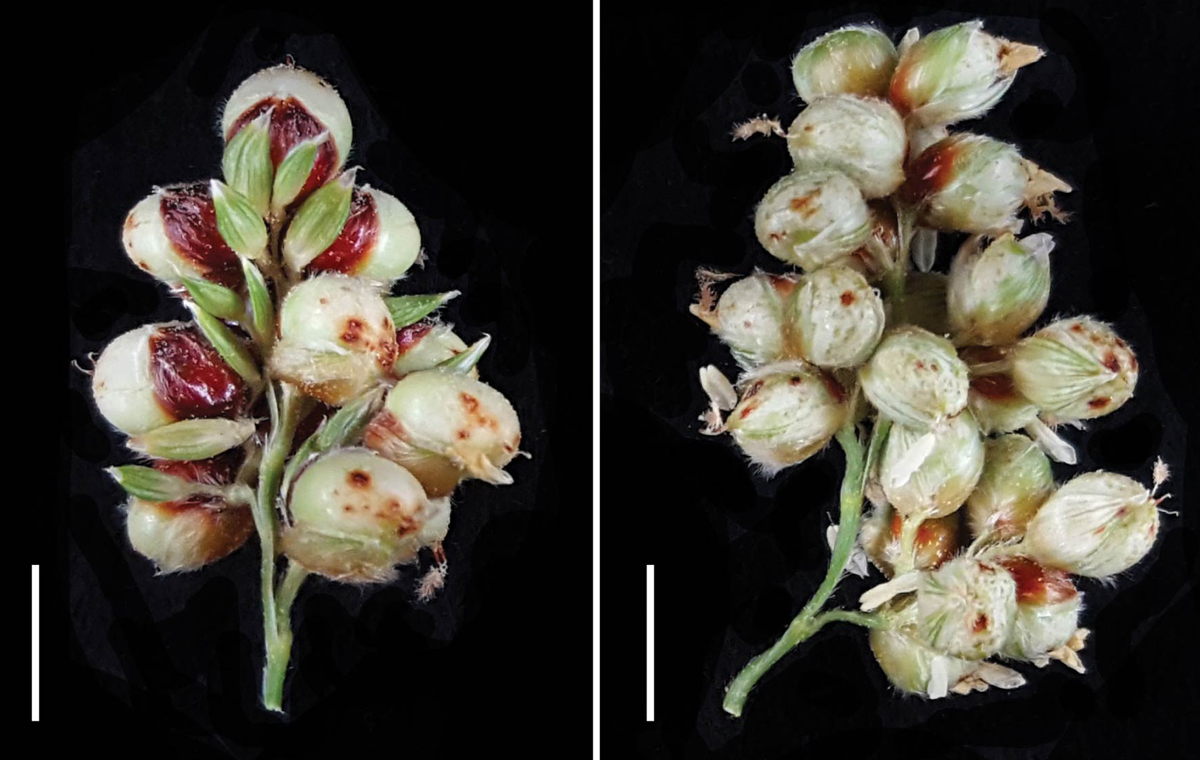
Scientists Double Sorghum Grain Yields by 200%
November 6, 2019| |
Scientists at the Cold Spring Harbor Laboratory (CSHL) and U.S. Department of Agriculture Agricultural Research Service (USDA ARS) have doubled the amount of grains that a sorghum plant can yield. Led by Dr. Doreen Ware, CSHL Adjunct Professor and research scientist at USDA and colleague Dr. Zhanguo Xin, the research team identified novel genetic variations in sorghum's MSD2 gene, increasing the grain yield by 200 percent.
MSD2 comes from the gene line that boosts flower fertility by lowering the amount of jasmonic acid, a hormone that controls seed and flower development. It is regulated by MSD1, a gene discovered by Dr. Ware's team in 2018. Their research shows that manipulating either gene increases seed and flower production.
Sorghum is one of the world's most important sources of food, animal feed, and biofuel. It is considered a model crop for research because it has a high tolerance to drought, heat, and high-salt conditions.
For more details, read the story in the CSHL Newsstand.
| |
You might also like:
- Sorghum's Weed-Killing Power Transferred to Rice
- Gene Controlling Stem Juiciness in Sorghum Identified
- Reference Genomes Show Strengths, Similarities of Grain and Sweet Sorghum
Biotech Updates is a weekly newsletter of ISAAA, a not-for-profit organization. It is distributed for free to over 22,000 subscribers worldwide to inform them about the key developments in biosciences, especially in biotechnology. Your support will help us in our mission to feed the world with knowledge. You can help by donating as little as $10.
-
See more articles:
-
News from Around the World
- Golden Rice Hailed As One of PMI's Most Influential Projects of the Last 50 Years
- Pumpkin Genomes Reveal Uncommon Evolutionary History
- Scientists Double Sorghum Grain Yields by 200%
- Researchers Discover ‘KARAPPO' Gene, Reveals How Plants Reproduce through Cloning
- New Book on Science of Communicating Science Published
- EU to Face Economic Disaster if GMO is Banned, Food Safety Commissioner Says
-
Research Highlights
- Increase in Maize Yield Results from Overexpression of Single Gene
- Long-read Sequence Technology Used to Find Genes for Improvement of Watermelon Traits
-
Plant
- CRISPR-Cas9 Used to Alter Anthocyanin Production in Black Rice
- Bacterial Blight Resistant Rice Developed thru Genome Editing
-
Read the latest: - Biotech Updates (December 17, 2025)
- Gene Editing Supplement (December 17, 2025)
- Gene Drive Supplement (February 22, 2023)
-
Subscribe to BU: - Share
- Tweet

